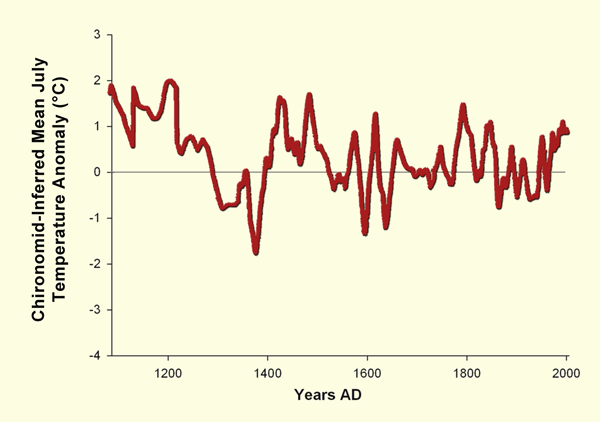Seebergsee, Northern Swiss Alps, Switzerland
Reference
Larocque-Tobler, I., Stewart, M.M., Quinlan, R., Traschel, M., Kamenik, C. and Grosjean, M. 2012. A last millennium temperature reconstruction using chironomids preserved in sediments of anoxic Seebergsee (Switzerland): consensus at local, regional and Central European scales. Quaternary Science Reviews 41: 49-56.
Reference
Larocque-Tobler, I., Stewart, M.M., Quinlan, R., Traschel, M., Kamenik, C. and Grosjean, M. 2012. A last millennium temperature reconstruction using chironomids preserved in sediments of anoxic Seebergsee (Switzerland): consensus at local, regional and Central European scales. Quaternary Science Reviews 41: 49-56.
Description
Working with a lake sediment core extracted in AD 2005 from the deepest point of Seebergsee (46°37'N, 7°28'E) in the northern Swiss Alps, Larocque-Tobler et al. mathematically analyzed the taxonomy of chironomid assemblages they identified in the sediments and used the results to reconstruct mean July air temperatures for the past 1000 years. This work revealed a Medieval Warm Period that began some time before AD 1000 (where their temperature history had its beginning) and lasted until about AD 1250, the peak temperature of which was approximately 0.9°C greater than the peak temperature near the end of their record, as best as can be determined from the graph of their data (adapted below).





